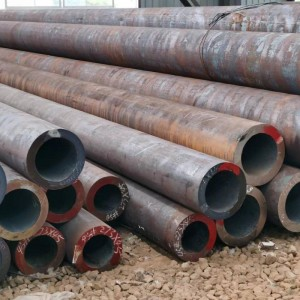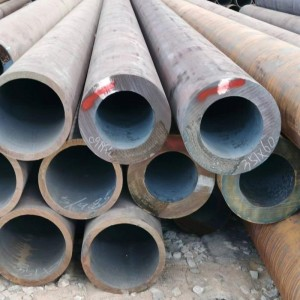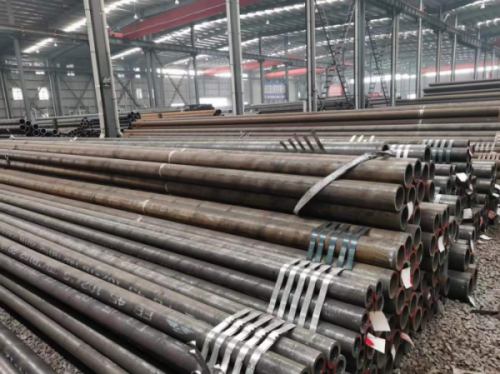The scope of ASTM A106 and ASTM A53:
ASTM A53 specification covers the steel pipe manufacturing types in seamless and welded, material in carbon steel, black steel. Surface natural, black, and hot-dipped galvanized, zinc coated steel pipe. Diameters range from NPS 1⁄8 to NPS 26 (10.3mm to 660mm), nominal wall thickness.
ASTM A106 standard specification covers the carbon seamless steel pipe, applied for high-temperature services.
Different types and grades for both standard:
For ASTM A53 there are ERW and seamless steel pipes Type F, E, S covers Grade A and B.
A53 Type F, furnace butt welded, continuous weld Grade A
A53 Type E, Electric resistance welded (ERW), in Grade A and Grade B.
A53 Type S, Seamless steel pipe, in Grade A and Grade B.
If raw steel material of different grades in process of continuously casting, the transition material result shall be identified. And the manufacturer should remove the transition material with the processes that could separate the grades positively.
In case ASTM A53 Grade B in ERW (electric resistance welded) pipe, the weld seam shall be done the heat treatment with a minimum 1000°F [540°C]. In this way the no untempered martensite remains.
In case ASTM A53 B pipe in cold expanded, then expansion should not exceed 1.5% of the required OD.
For ASTM A106 steel pipe, manufacturing Type only in seamless, processes hot rolled and the cold drawn. Grade in A, B and C.
ASTM A106 Grade A: Maximum Carbon element 0.25%, Mn 0.27-0.93%. Minimum tensile strength 48000 Psi or 330 Mpa, yield strength 30000 Psi or 205 Mpa.
A106 Grade B: Maximum C below 0.30%, Mn 0.29-1.06%. Minimum tensile strength 60000 Psi or 415 Mpa, yield strength 35000 Psi or 240 Mpa.
Grade C: Maximum C 0.35%, Mn 0.29-1.06%. Minimum tensile strength 70000 Psi or 485 Mpa, yield strength 40000 Psi or 275 Mpa.
Differently with ASTM A53 GR.B seamless steel pipes , ASTM A106 GR.B seamless steel pipes has Si min 0.1%, which A53 B has 0, so A106 B have better heat resistance than A53 B, since Si improve the heat resistance.
Application areas of both:
Both pipes applied for mechanical and pressure systems, transporting steam, water, gas, and etc.


ASTM A53 pipe application:
1. Construction, underground transportation, extraction of ground water while building, steam water transportation etc.
2. Bearing sets, machinery parts processing.
3. Electric application: Gas transmission, water power generation fluid pipeline.
4. Wind power plant anti-static tube etc.
5. Pipelines that required zinc coated.
ASTM A106 pipe application:
Especially for high temperature services that up to 750°F, and it could substitute ASTM A53 pipe in most of the cases. In some country at least in United States, usually ASTM A53 is for welded pipe while ASTM A106 is for seamless steel pipes. And if client asked for ASTM A53 they will also offer ASTM A106. In China, manufacturer will offer the pipe that comply to three standards ASTM A53 GR.B/ASTM A106 GR.B/API 5L GR.B seamless steel pipes.
Post time: Jul-11-2023
